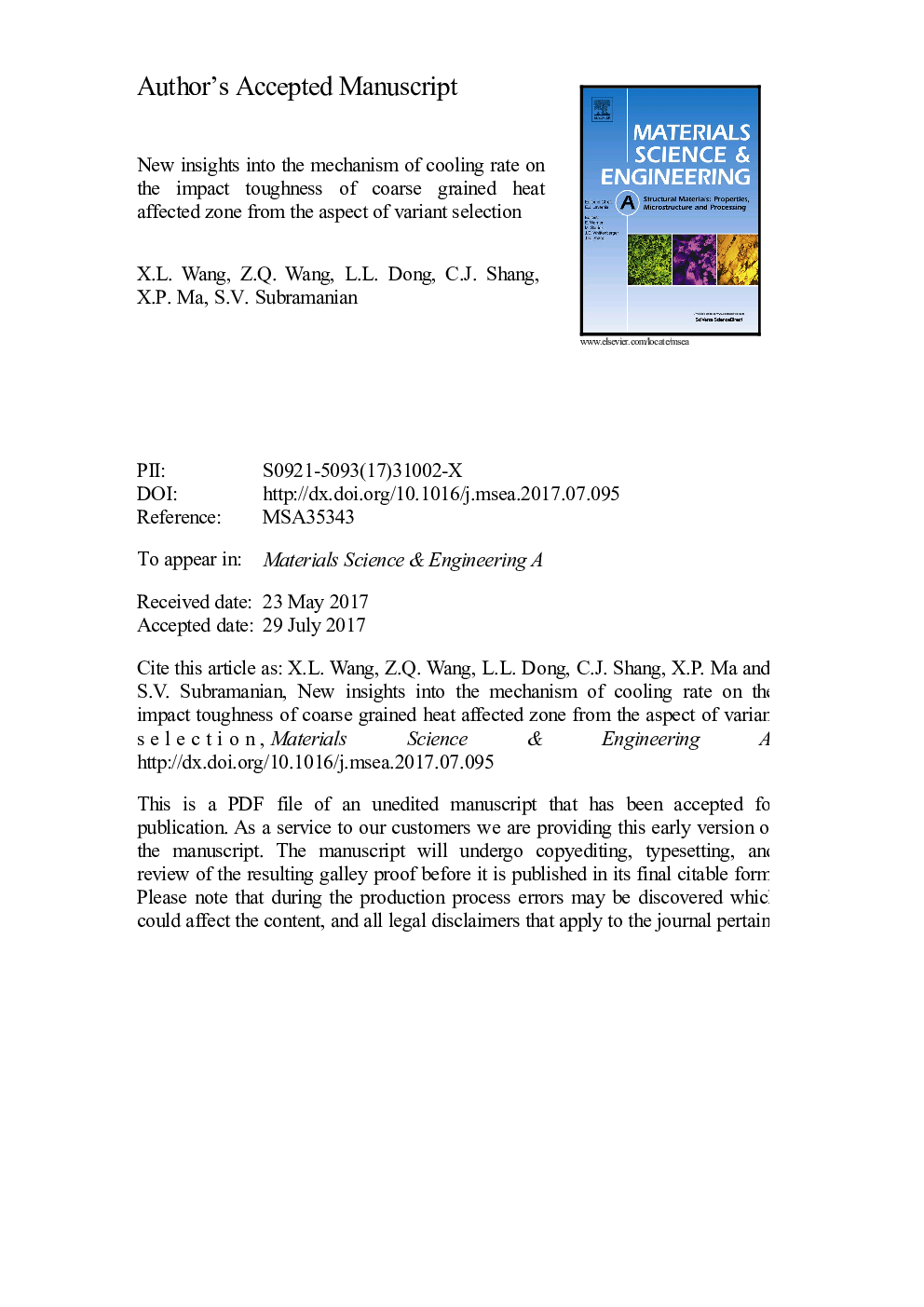| Article ID | Journal | Published Year | Pages | File Type |
|---|---|---|---|---|
| 5455602 | Materials Science and Engineering: A | 2017 | 21 Pages |
Abstract
In this article, the authors tried to establish a direct correlation between crystallographic variants and impact toughness, and provided some novel insights into the mechanism of cooling rate on the impact toughness of coarse grained heat affected zone (CGHAZ) of offshore engineering steel by means of electron back-scattering diffraction (EBSD) analysis. The results showed that variant selection becomes stronger with an decrease in the cooling rate, resulting in the decline of high angle grain boundaries (HAGBs) and thus lower the impact toughness. Moreover, the variation in impact toughness is mainly correlated to the crystallographic block size. The larger the block size, the lower the impact toughness. By visualizing the crystallographic features, it has been clarified that the transition from Bain zone grouping to close-packed plane grouping with the increase of cooling rate, while the corresponding microstructure changes from granular bainite to lath bainite. Furthermore, it has been found that ~ 25% (number fraction) reconstructed prior austenite grains in simulated CGHAZ present a twin-related structure (austenitic twin), which can enhance the variant selection and displays a negative effect on the formation of HAGBs.
Related Topics
Physical Sciences and Engineering
Materials Science
Materials Science (General)
Authors
X.L. Wang, Z.Q. Wang, L.L. Dong, C.J. Shang, X.P. Ma, S.V. Subramanian,
